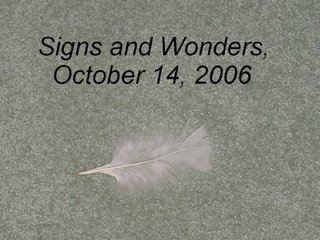Clocks
 Each autumn, when I go around the house setting all the timepieces to Eastern Standard Time, I find myself humming a song I used to sing in school called “My Grandfather’s Clock.” It went like this:
Each autumn, when I go around the house setting all the timepieces to Eastern Standard Time, I find myself humming a song I used to sing in school called “My Grandfather’s Clock.” It went like this:My grandfather's clock was too large for the shelf
So it stood ninety years on the floor.
It was taller by half than the old man himself,
But it weighed not a penny-weight more.
It was bought on the morn
Of the day that he was born
And was always his joy and his pride
But it stopped -- short -- never to go again
When the old man died.
Ninety years without slumbering,
Tick-tock, tick-tock
His life's seconds numbering,
Tick-tock, tick-tock
It stopped -- short -- never to go again
When the old man died.
It wasn’t only the onomatopoetic rhythm of the lyrics that fascinated me ( I liked to tilt my head sideways on the “tick tocks”), nor was it simply the neck-stretching vision of a tall clock that captured my imagination. No, it was the tantalizing story the song had to tell. Imagine -- a clock that stopped ticking at exactly the same time its owner stopped breathing!
Were the mutual demise of man and machinery mere coincidence, or is there a deeper story here? Is it possible that after many, many years, an inanimate object – a mere piece of furniture that houses a warren of cogs and wheels marking the passage of time – could become linked in simpatico to its owner? Could the swaying pendulum and the sword and scissors hands that sweep around the face of a clock each day and night develop an intelligence that informs them when their movements no longer have meaning?
In the same way that an athlete’s numbered uniform is “retired” when he no longer can play, so also does a father’s favorite chair stand empty in a grieving home.
For the Native American, according to Louise Erdrich in her novel The Last Report on the Miracles at Little No Horse, the quality of animation from within – the harboring spirit – is not limited to animals and plants. Stones are animate, and kettles alive as well. And when their owners no longer have physical contact with them, their very substance is changed.
Admittedly, it’s a “tock-tick” idea that material things might be spirit surrounded by a shell of substance. But I like it – because I believe that’s what we are, too.

